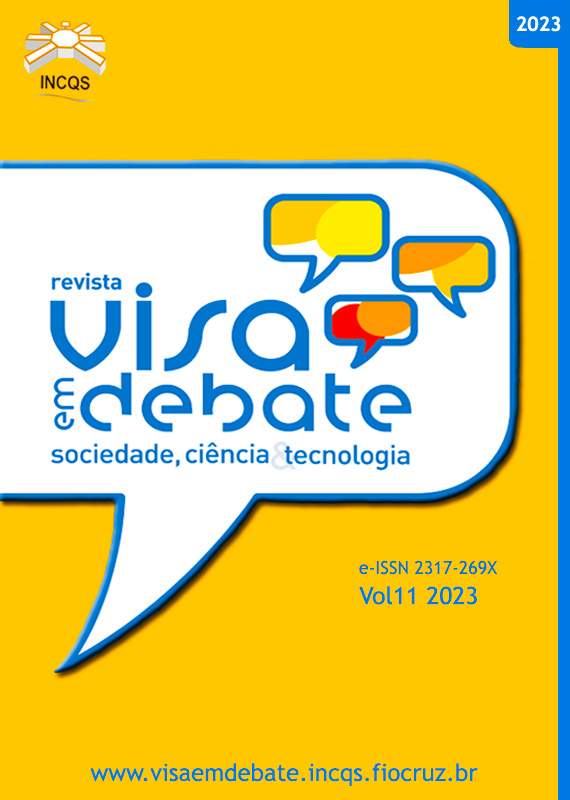Prenatal care during the COVID-19 pandemic: An analysis of Previne Brasil indicators and their influence on the incidence of congenital syphilis and in pregnant women
Vigil Sanit Debate, Rio de Janeiro, 2023, v.11: e02116 | Published on: 20/06/2023
DOI:
https://doi.org/10.22239/2317-269x.02116Keywords:
Primary Health Care, Oral Health Services, Prenatal CareAbstract
Introduction: Prevent Brazil has restructured the form of SUS financing, establishing goals and indicators whose objective is to ensure the quality of care. Three of these new indicators concern prenatal care. Objective: To evaluate the quality of prenatal activities provided to pregnant women in the city of Campina Grande (PB) between 2018 and 2021, through the indicators of Previne Brasil, establishing a comparison between the years of the COVID-19 pandemic and relating them with the incidence of cases of congenital syphilis and in pregnant women. Method: This is an ecological, observational and descriptive study carried out through the collection of secondary data from the Health Information System for Primary Care (2018–2021) of performance indicators of the Previne Brazil Program for prenatal care: proportion of pregnant women with at least six prenatal consultations; proportion of pregnant women who underwent tests for syphilis and HIV; and proportion of pregnant women who underwent dental care. A search for new cases of congenital syphilis and in pregnant women was also added to the TABNET - Information System for Notifiable Diseases (Sinan) covering the same years. Results: The indicator with the worst results was dental care. For the others, although there is some variation of improvement between quarters, the three indicators evaluated showed results far below the 60% target established by the Ministry of Health, which may have influenced the considerable increase in the incidence of syphilis in 2021. Conclusions: It is necessary to establish effective ways of improving care that culminate in comprehensive care for the health of pregnant women that promote the health of the baby from prenatal care. In addition, it is necessary to study the barriers that separate pregnant women from dental care, demystifying the relationship established between pregnancy and oral health care.
Downloads
Published
Issue
Section
License
Copyright (c) 2023 Waleska Fernanda Souto Nóbrega, Wallas Lins dos Santos, Gustavo Correia Basto da Silva, Yuri Lins dos Santos, Danilo Viera Barbosa, Sérgio d’Ávila Lins Bezerra Cavalcanti (Autor)

This work is licensed under a Creative Commons Attribution 4.0 International License.
COPYRIGHT ALLOWANCE The author (s) hereinafter designated as the ASSIGNOR hereby assign and transfer, free of charge, the ownership of the copyrights related to this ARTICLE to the Vigilância Sanitária em Debate: Sociedade, Ciência & Tecnologia (Health Surveillance under Debate: Society, Science & Technology) – Visa em Debate, represented by FUNDAÇÃO OSWALDO CRUZ, established at Av. Brasil, nº 4365, Manguinhos, Rio de Janeiro, RJ, Brazil, CEP 21045-900, under the conditions set out below: (a) The terms and conditions set forth in this Agreement shall apply to the following: 1. The ASSIGNOR declares that they s(he) is (are) the author (s) and owner (s) of the copyrighted property of the ARTICLE submitted. 2. The ASSIGNOR declares that the ARTICLE does not infringe the copyrights and / or other property rights of third parties, that the disclosure of images (if any) has been authorized and that they s(he) assume(s) full moral and / or property liability for its content, before third parties. 3. THE ASSIGNOR assigns and transfers all copyrights relating to the ARTICLE to the ASSIGNEE, especially the rights of editing, publication, translation into another language and reproduction by any process or technique. The ASSIGNEE becomes the exclusive owner of the rights related to the ARTICLE, and any reproduction, totally or partially, is prohibited in any other means of publicity, printed or electronic, without prior written authorization from the ASSIGNEE. 4. The assignment is free and, therefore, there will be no remuneration for the use of the ARTICLE by the ASSIGNEE.






